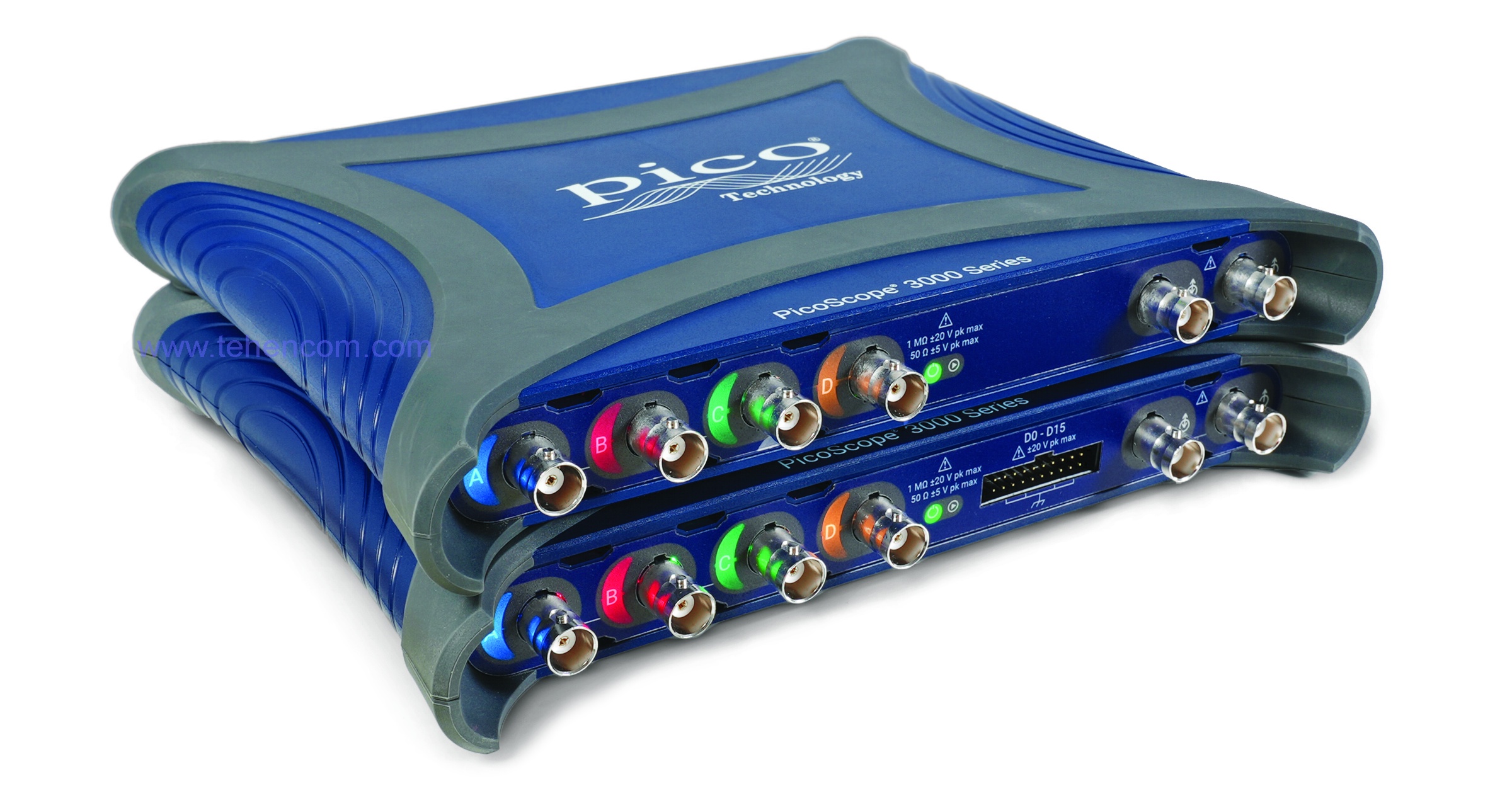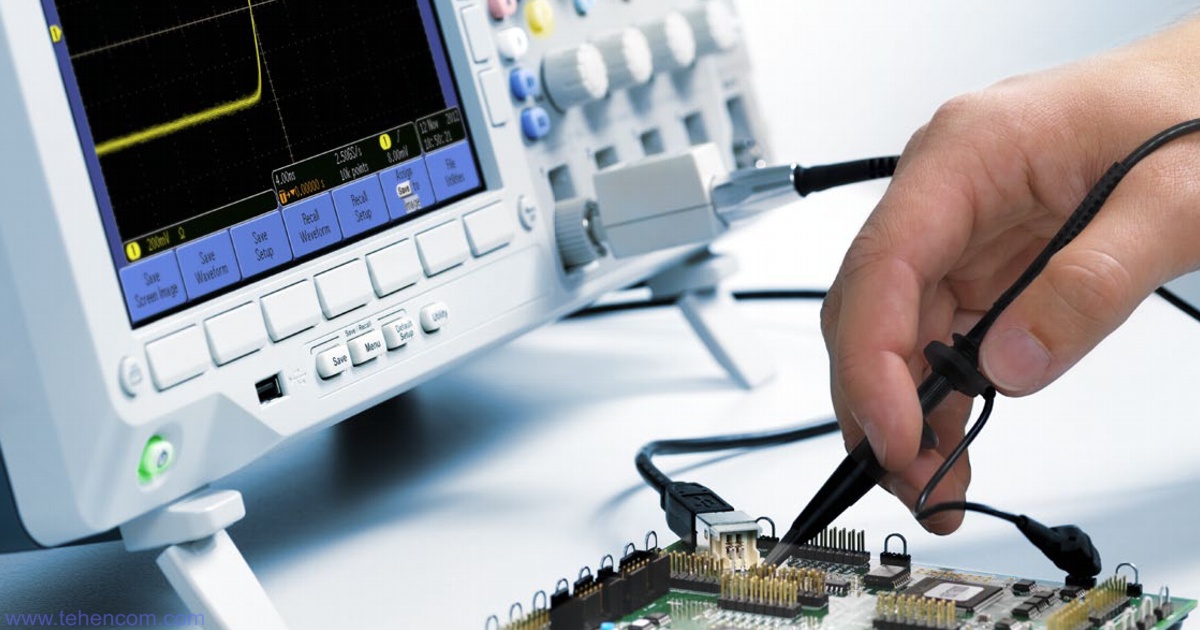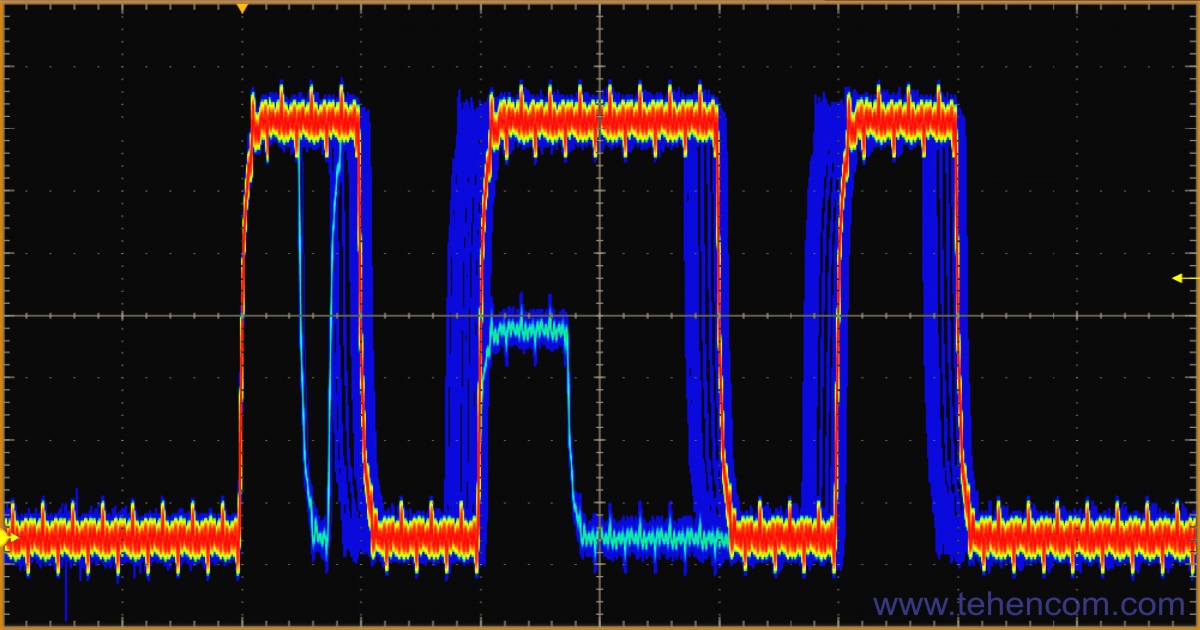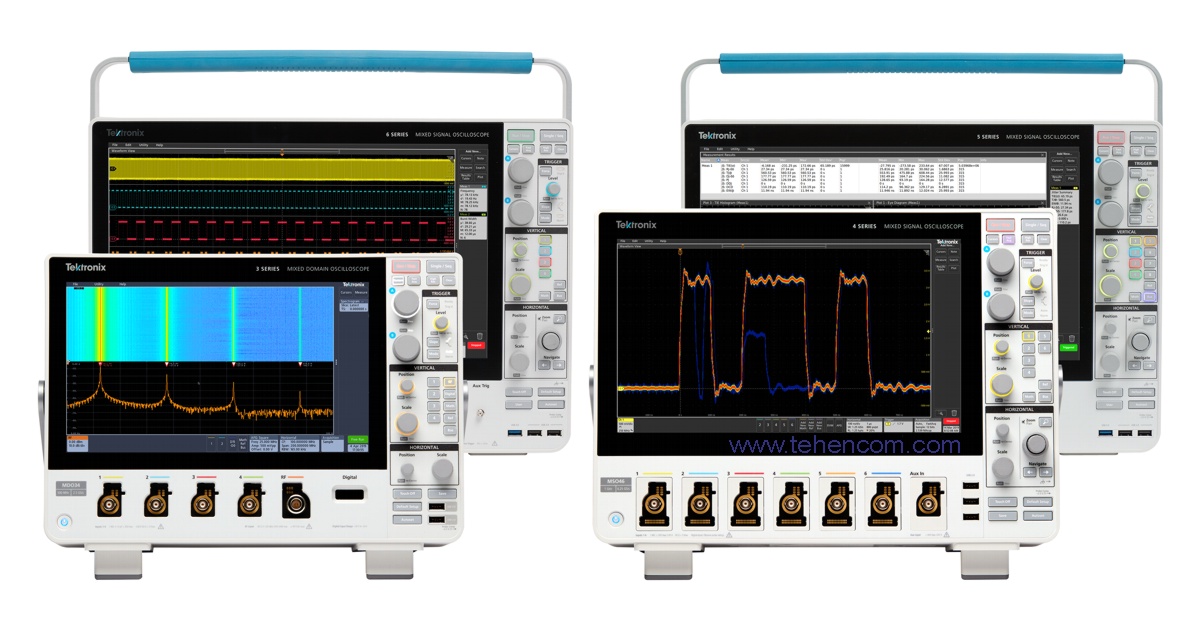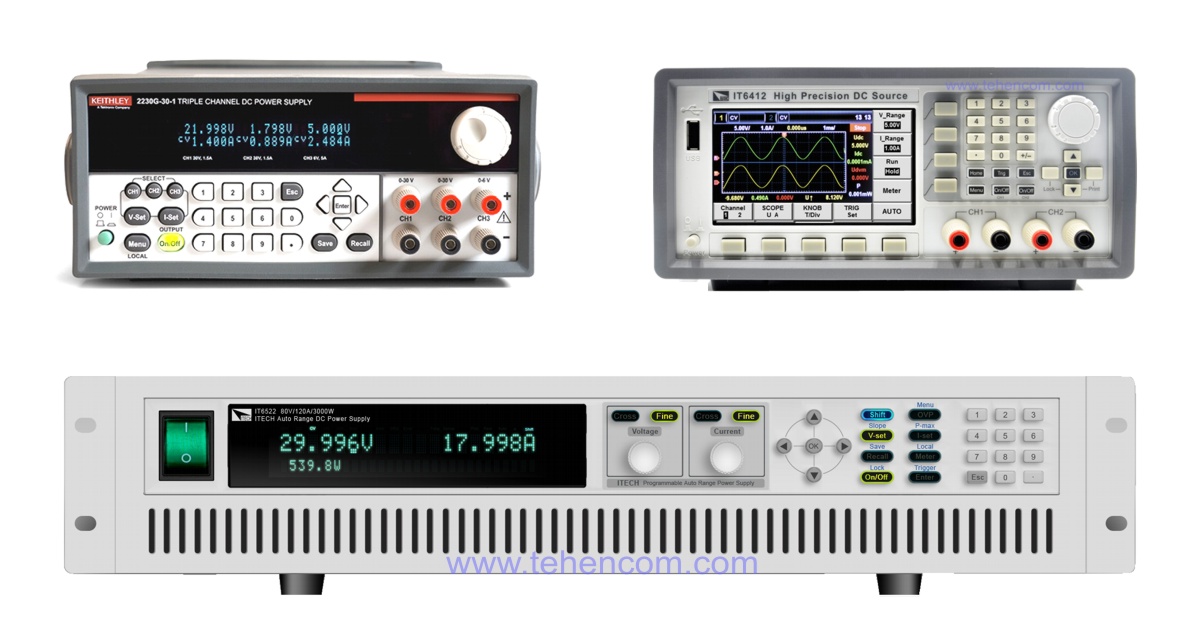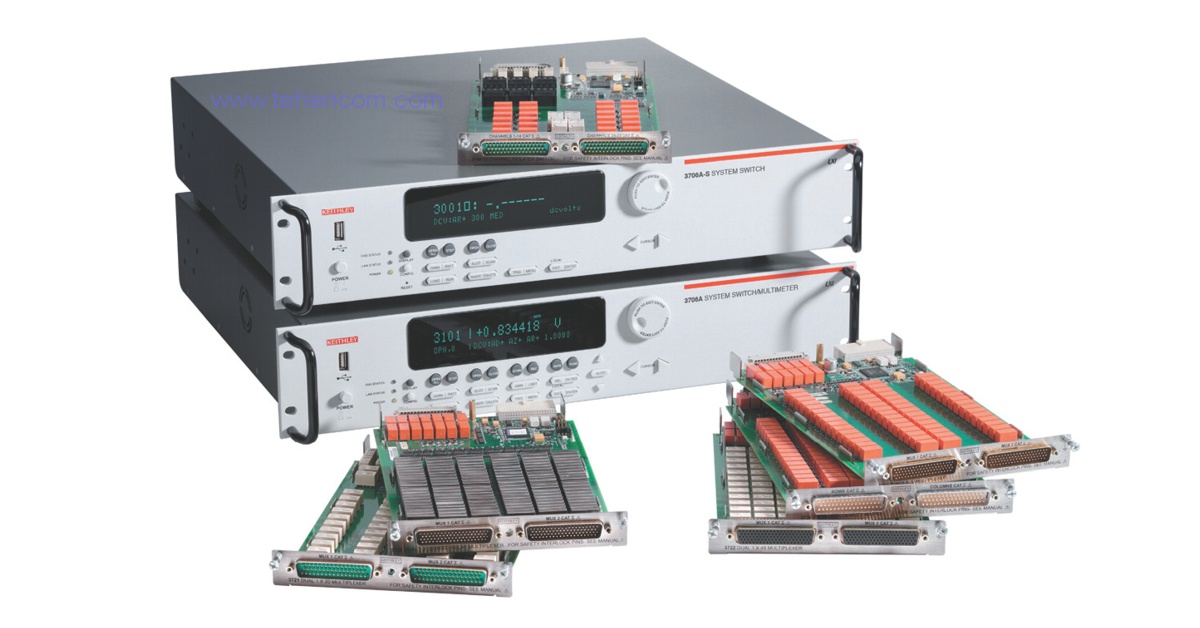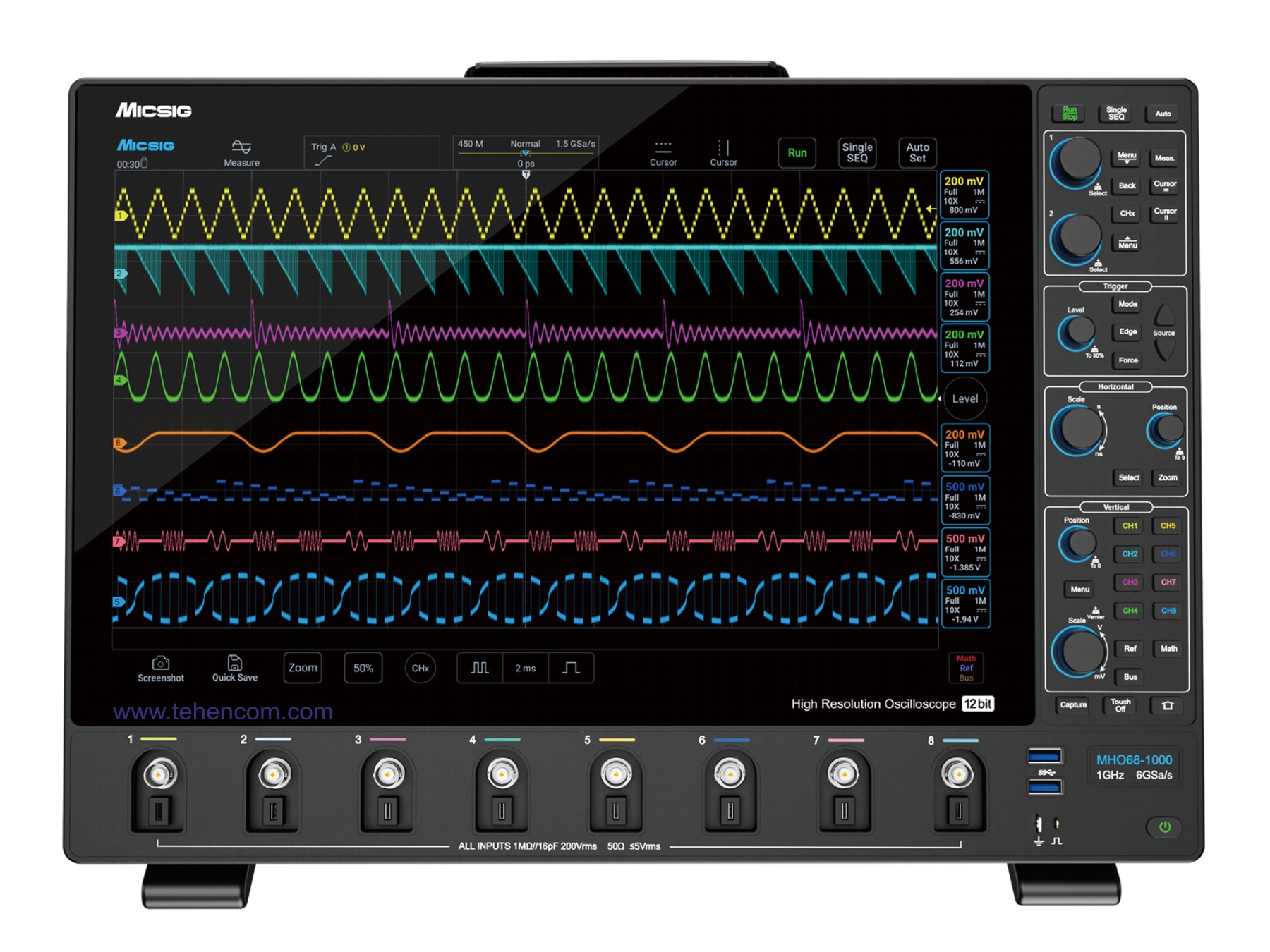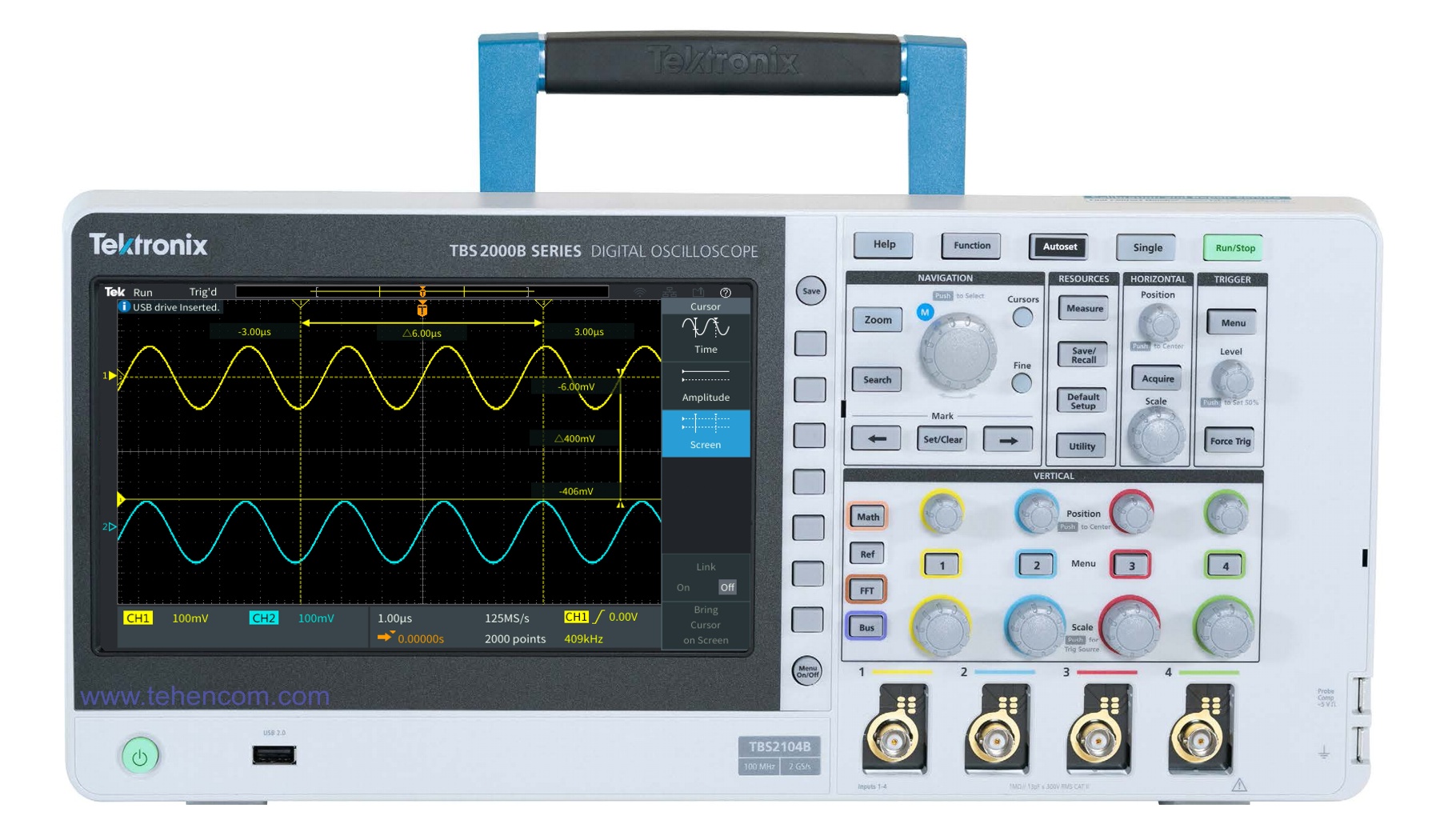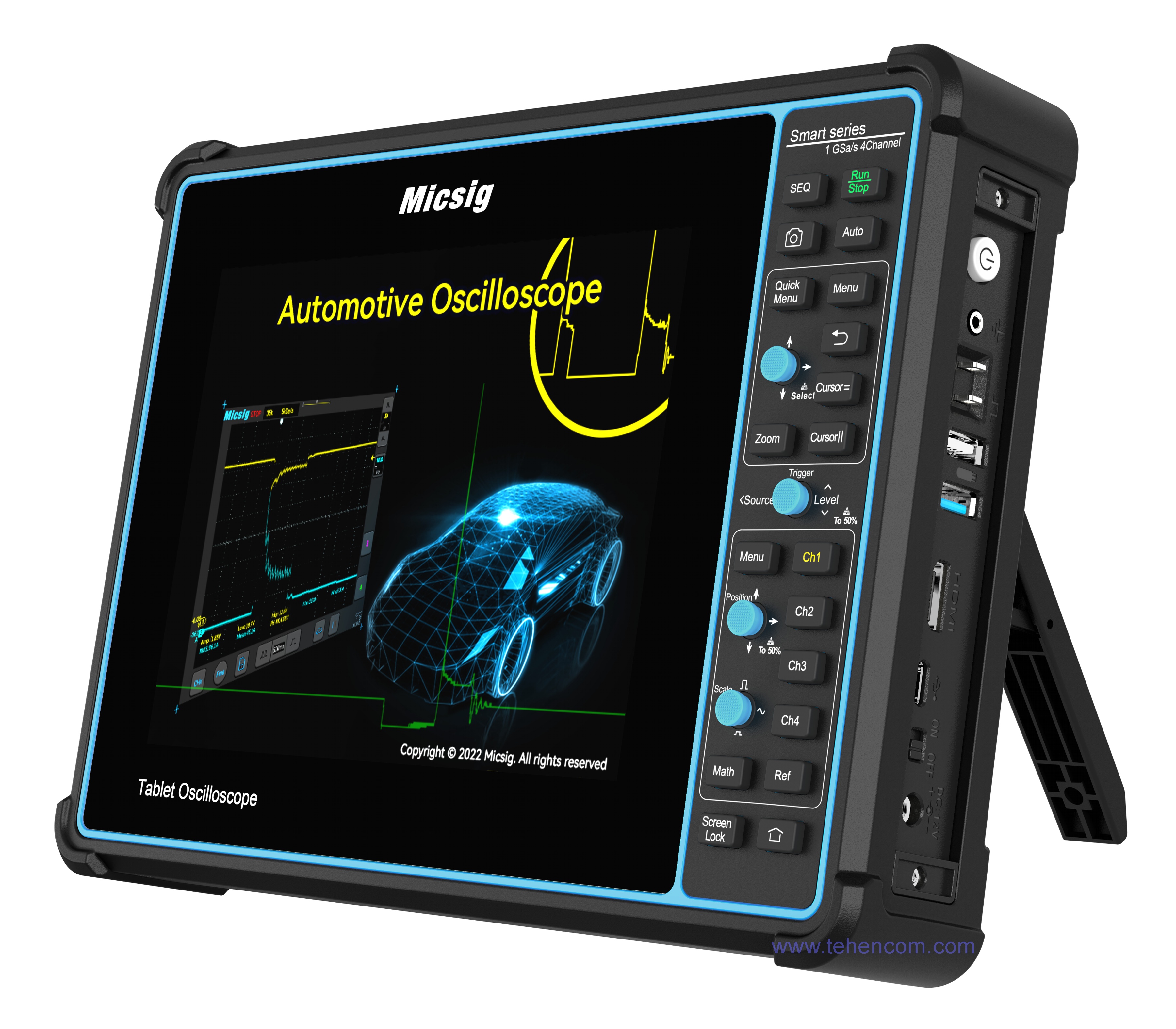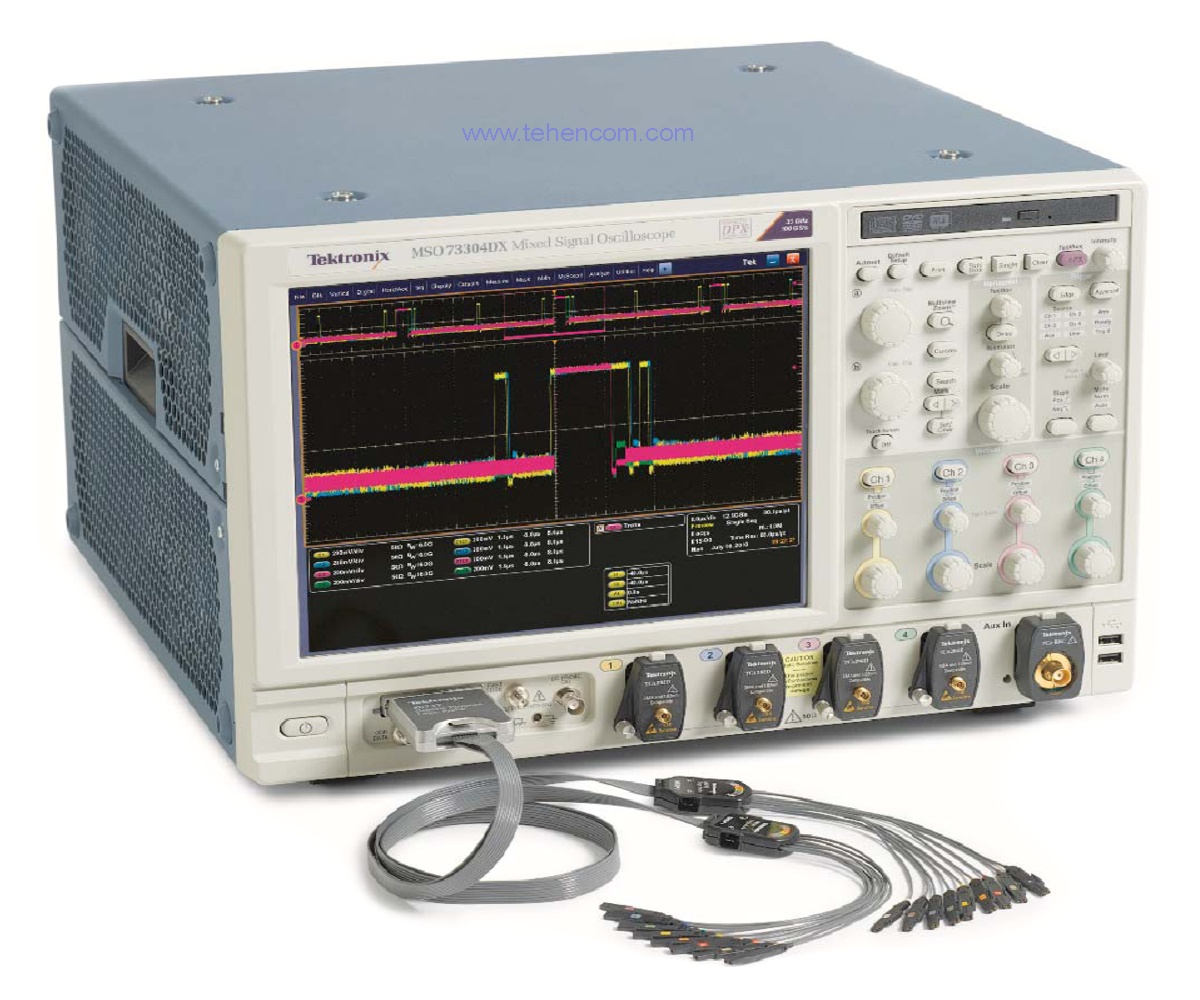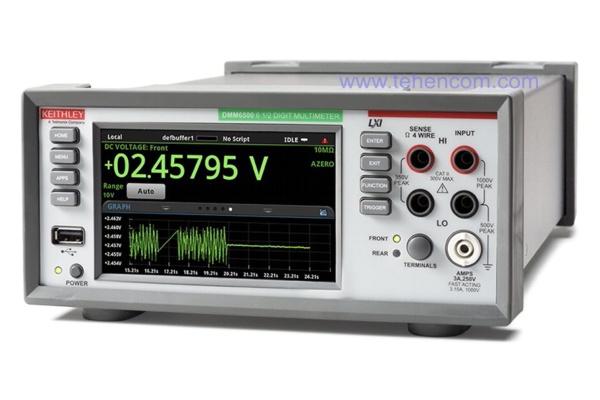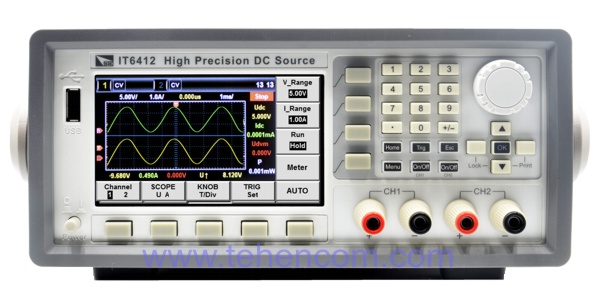USB oscilloscopes
-
Top sales
 Pico Technology 2206B MSO
Pico Technology 2206B MSOOscilloscope, 50 MHz, 2 + 16 channels, 1 GS/s
From 35 592 UAH
In stock
Product code: 3030007
Record length: 32 M points
Vertical resolution: 8 bits
Waveforms per second: 80 000
USB oscilloscope 50 MHz with large memory and logic analyzer for 16 channels.
-
NoveltyPromotionTop sales
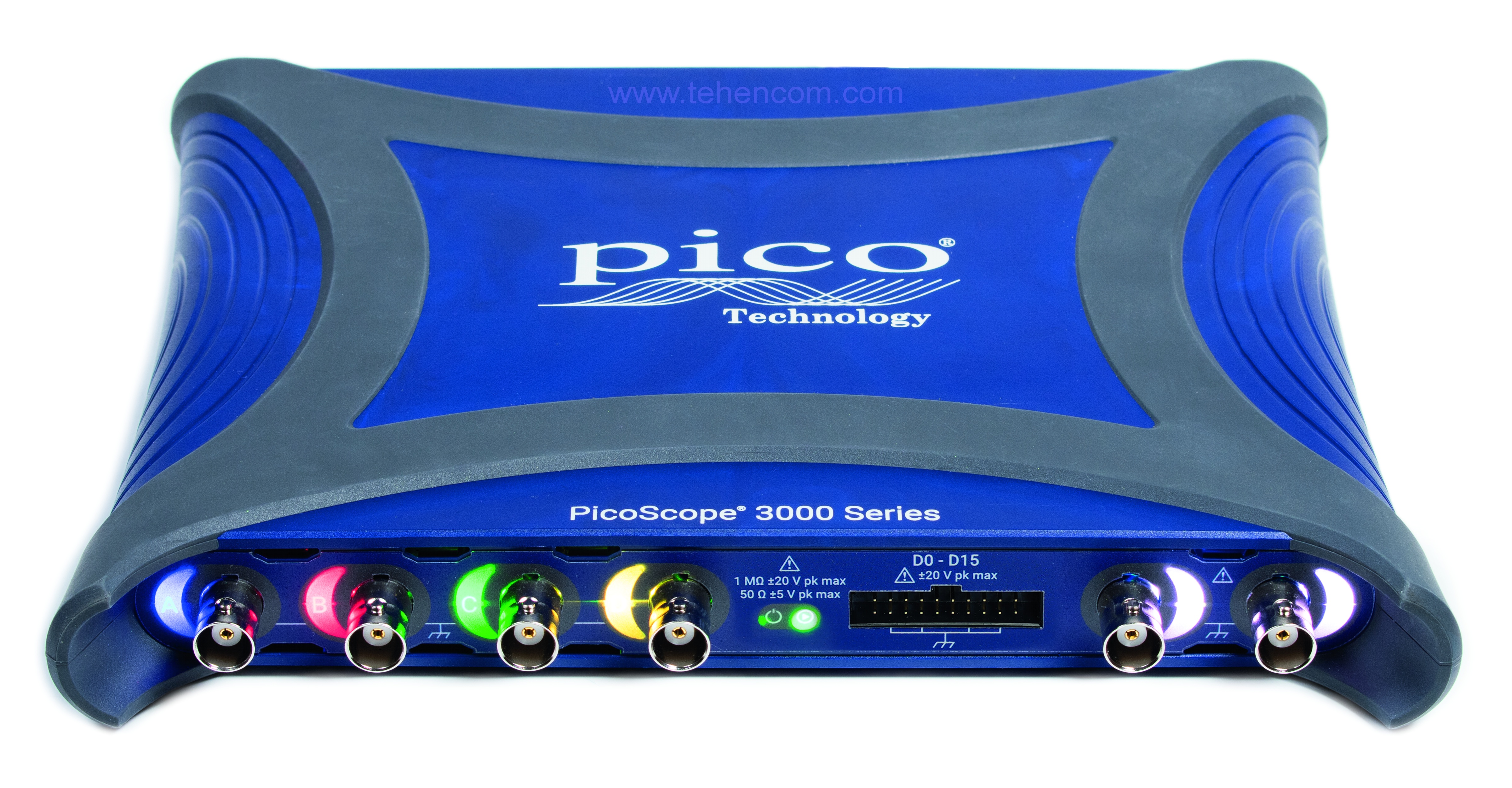 Pico Technology 3417E MSO
Pico Technology 3417E MSOOscilloscope, 350 MHz, 4 + 16 channels, 5 GS/s
From 193 301 UAH
–5%
From 183 636 UAH
Coming soon
Product code: 3030107
Record length: 2 000 M points
Vertical resolution: 8 – 10 bits
Waveforms per second: 300 000
-
NoveltyPromotionTop sales
 Pico Technology 3416E MSO
Pico Technology 3416E MSOOscilloscope, 200 MHz, 4 + 16 channels, 5 GS/s
From 133 402 UAH
–5%
From 126 732 UAH
On order
Product code: 3030105
Record length: 2 000 M points
Vertical resolution: 8 – 10 bits
Waveforms per second: 300 000
-
Promotion
 Pico Technology 6424E
Pico Technology 6424EOscilloscope, 500 MHz, 4 + 16 channels, 5 GS/s
From 420 505 UAH
–5%
From 399 480 UAH
On order
Product code: 3030022
Record length: 4 000 M points
Vertical resolution: 8 – 12 bits
Waveforms per second: 300 000
USB oscilloscope with high-resolution ADC and built-in logic analyzer.
-
Top sales
 Pico Technology 2208B MSO
Pico Technology 2208B MSOOscilloscope, 100 MHz, 2 + 16 channels, 1 GS/s
From 55 194 UAH
On order
Product code: 3030013
Record length: 128 M points
Vertical resolution: 8 bits
Waveforms per second: 80 000
-
NoveltyExpert's choice
 Pico Technology 3415E MSO
Pico Technology 3415E MSOOscilloscope, 100 MHz, 4 + 16 channels, 5 GS/s
From 112 614 UAH
On order
Product code: 3030103
Record length: 2 000 M points
Vertical resolution: 8 – 10 bits
Waveforms per second: 300 000
-
Top sales
 Pico Technology 5243D
Pico Technology 5243DOscilloscope, 100 MHz, 2 channels, 1 GS/s
From 87 864 UAH
On order
Product code: 3030038
Record length: 256 M points
Vertical resolution: 8 – 16 bits
Waveforms per second: 130 000
-
NoveltyExpert's choice
 Pico Technology 3418E MSO
Pico Technology 3418E MSOOscilloscope, 500 MHz, 4 + 16 channels, 5 GS/s
From 235 374 UAH
On order
Product code: 3030109
Record length: 2 000 M points
Vertical resolution: 8 – 10 bits
Waveforms per second: 300 000
-
Expert's choice
 Pico Technology 5244D
Pico Technology 5244DOscilloscope, 200 MHz, 2 channels, 1 GS/s
From 105 192 UAH
On order
Product code: 3030042
Record length: 512 M points
Vertical resolution: 8 – 16 bits
Waveforms per second: 130 000
-
Expert's choice
 Pico Technology 5444D MSO
Pico Technology 5444D MSOOscilloscope, 200 MHz, 4 + 16 channels, 1 GS/s
From 161 124 UAH
On order
Product code: 3030045
Record length: 512 M points
Vertical resolution: 8 – 16 bits
Waveforms per second: 130 000
USB oscilloscope 200 MHz with high-resolution ADC and built-in logic analyzer.
-
Expert's choice
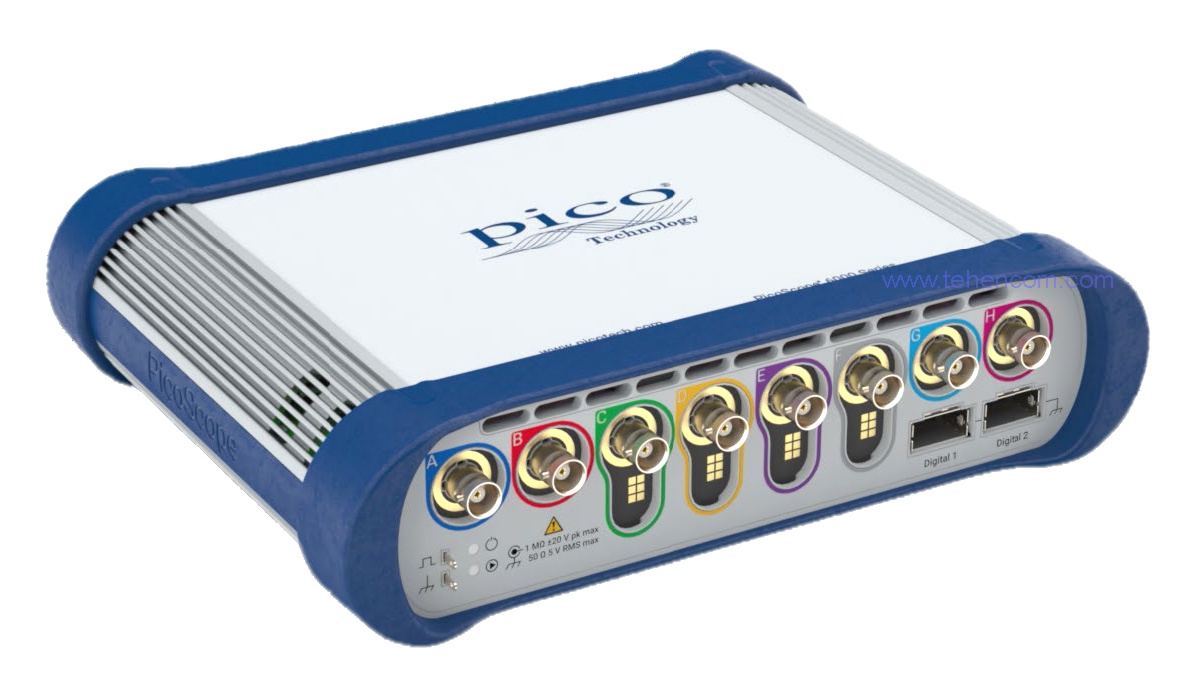 Pico Technology 6824E
Pico Technology 6824EOscilloscope, 500 MHz, 8 + 16 channels, 5 GS/s
Price on request
On order
Product code: 3030024
Record length: 4 000 M points
Vertical resolution: 8 – 12 bits
Waveforms per second: 300 000
Eight-channel USB oscilloscope with built-in logic analyzer.
-
Novelty
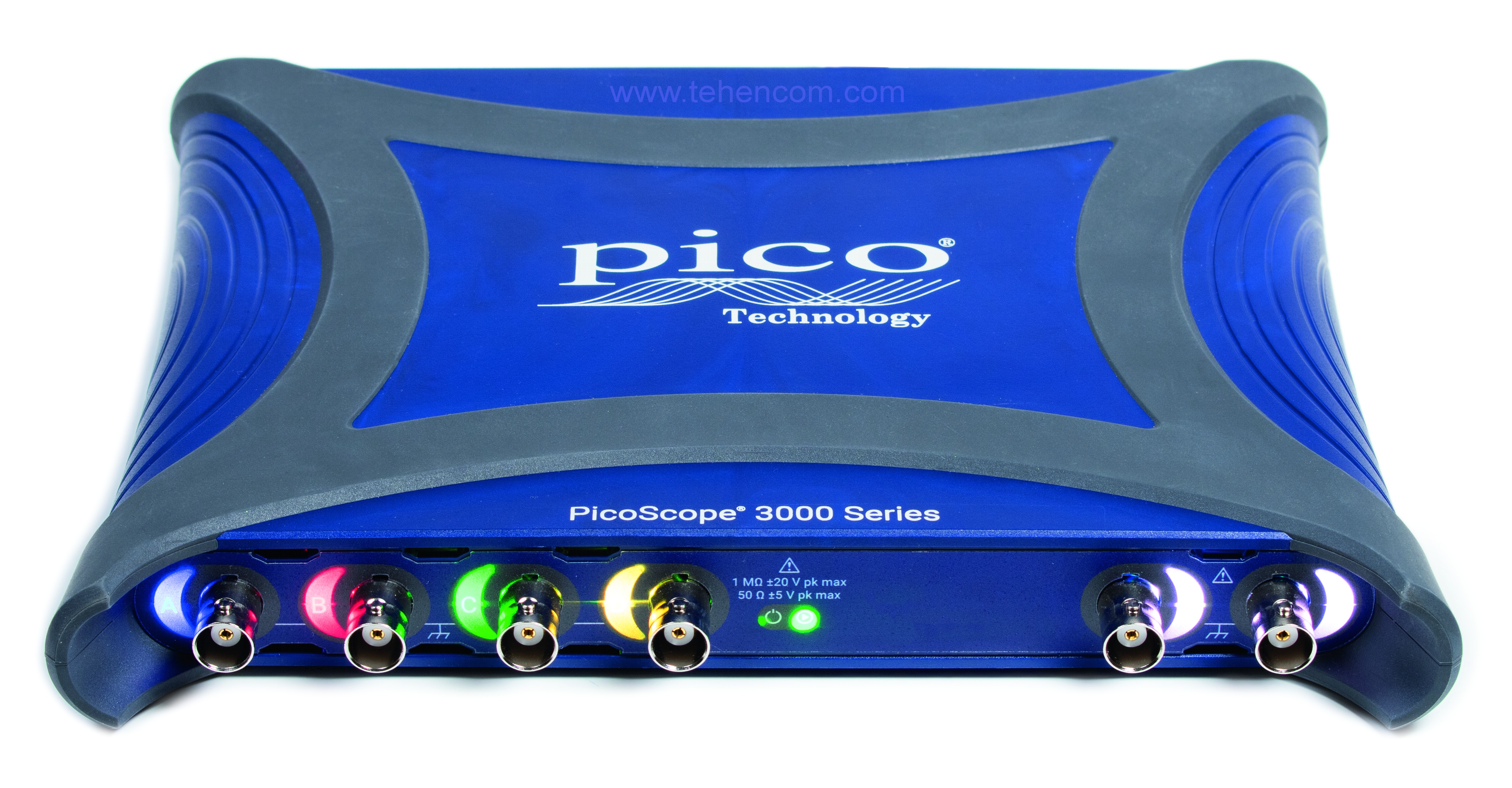 Pico Technology 3415E
Pico Technology 3415EOscilloscope, 100 MHz, 4 channels, 5 GS/s
From 91 332 UAH
On order
Product code: 3030102
Record length: 2 000 M points
Vertical resolution: 8 – 10 bits
Waveforms per second: 300 000
-
 Pico Technology 5242D
Pico Technology 5242DOscilloscope, 60 MHz, 2 channels, 1 GS/s
From 67 074 UAH
On order
Product code: 3030034
Record length: 128 M points
Vertical resolution: 8 – 16 bits
Waveforms per second: 130 000
-
 Pico Technology 6405E
Pico Technology 6405EOscilloscope, 750 MHz, 4 + 16 channels, 5 GS/s
From 462 084 UAH
On order
Product code: 3030025
Record length: 2 000 M points
Vertical resolution: 8 bits
Waveforms per second: 300 000
-
 Pico Technology 6404E
Pico Technology 6404EOscilloscope, 500 MHz, 4 + 16 channels, 5 GS/s
From 352 692 UAH
On order
Product code: 3030021
Record length: 2 000 M points
Vertical resolution: 8 bits
Waveforms per second: 300 000
-
 Pico Technology 6403E
Pico Technology 6403EOscilloscope, 300 MHz, 4 + 16 channels, 2.5 GS/s
From 244 284 UAH
On order
Product code: 3030020
Record length: 1 000 M points
Vertical resolution: 8 bits
Waveforms per second: 300 000
-
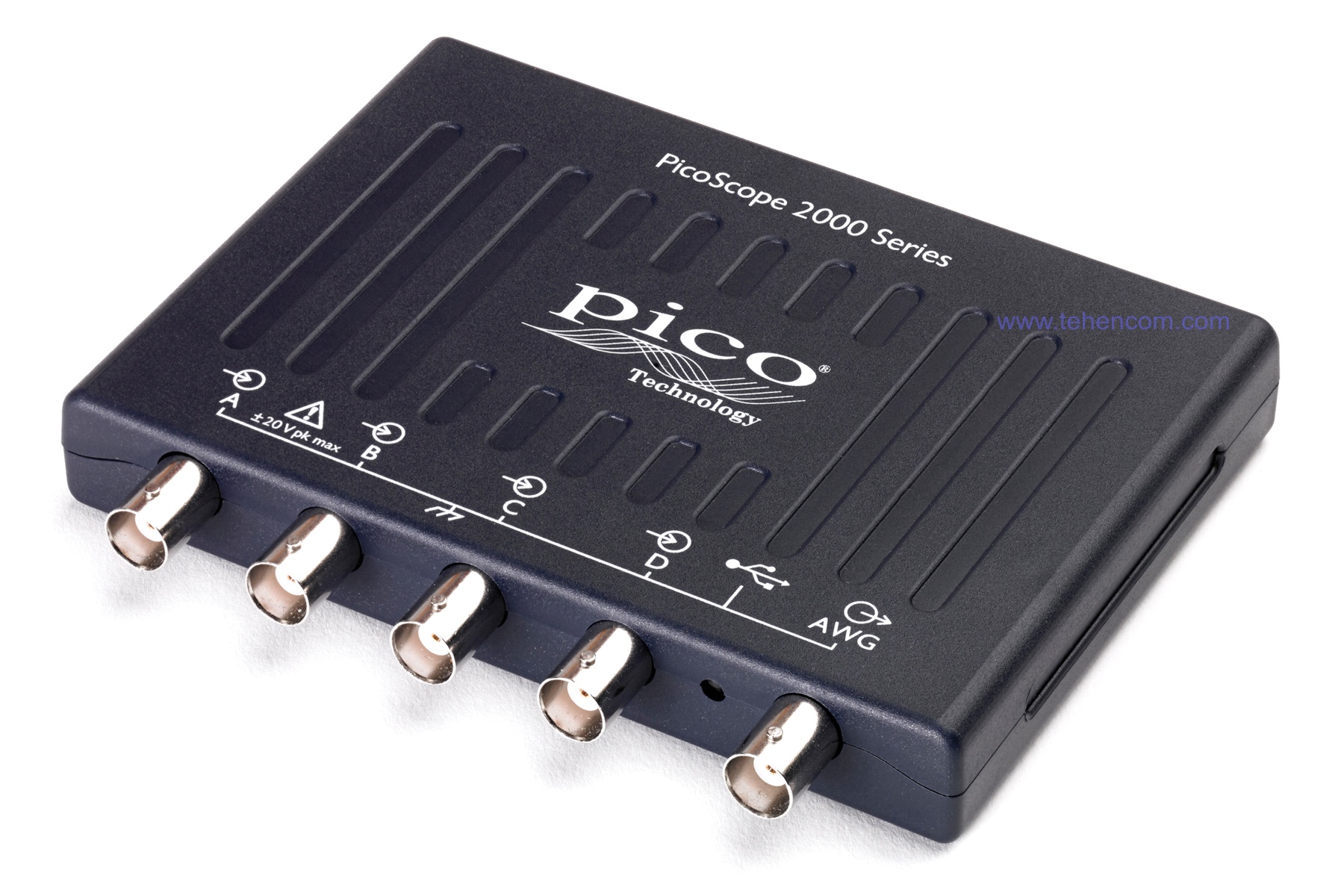 Pico Technology 2408B
Pico Technology 2408BOscilloscope, 100 MHz, 4 channels, 1 GS/s
From 62 622 UAH
On order
Product code: 3030012
Record length: 128 M points
Vertical resolution: 8 bits
Waveforms per second: 80 000
-
 Pico Technology 2208B
Pico Technology 2208BOscilloscope, 100 MHz, 2 channels, 1 GS/s
From 40 050 UAH
On order
Product code: 3030011
Record length: 128 M points
Vertical resolution: 8 bits
Waveforms per second: 80 000
-
 Pico Technology 2207B MSO
Pico Technology 2207B MSOOscilloscope, 70 MHz, 2 + 16 channels, 1 GS/s
From 44 502 UAH
On order
Product code: 3030010
Record length: 64 M points
Vertical resolution: 8 bits
Waveforms per second: 80 000
-
 Pico Technology 2407B
Pico Technology 2407BOscilloscope, 70 MHz, 4 channels, 1 GS/s
From 47 472 UAH
On order
Product code: 3030009
Record length: 64 M points
Vertical resolution: 8 bits
Waveforms per second: 80 000
-
 Pico Technology 2207B
Pico Technology 2207BOscilloscope, 70 MHz, 2 channels, 1 GS/s
From 30 642 UAH
On order
Product code: 3030008
Record length: 64 M points
Vertical resolution: 8 bits
Waveforms per second: 80 000
-
 Pico Technology 2406B
Pico Technology 2406BOscilloscope, 50 MHz, 4 channels, 1 GS/s
From 34 602 UAH
On order
Product code: 3030006
Record length: 32 M points
Vertical resolution: 8 bits
Waveforms per second: 80 000
-
 Pico Technology 2206B
Pico Technology 2206BOscilloscope, 50 MHz, 2 channels, 500 MS/s
From 24 210 UAH
On order
Product code: 3030005
Record length: 32 M points
Vertical resolution: 8 bits
Waveforms per second: 80 000
Digital USB oscilloscope 50 MHz with large built-in memory.
-
 Pico Technology 2205A MSO
Pico Technology 2205A MSOOscilloscope, 25 MHz, 2 + 16 channels, 500 MS/s
From 28 170 UAH
On order
Product code: 3030004
Record length: 48 K points
Vertical resolution: 8 bits
Waveforms per second: 2 000
-
 Pico Technology 2405A
Pico Technology 2405AOscilloscope, 25 MHz, 4 channels, 500 MS/s
From 28 662 UAH
On order
Product code: 3030003
Record length: 48 K points
Vertical resolution: 8 bits
Waveforms per second: 2 000
-
 Pico Technology 2205A
Pico Technology 2205AOscilloscope, 25 MHz, 2 channels, 200 MS/s
From 16 782 UAH
On order
Product code: 3030002
Record length: 16 K points
Vertical resolution: 8 bits
Waveforms per second: 2 000
-
 Pico Technology 2204A
Pico Technology 2204AOscilloscope, 10 MHz, 2 channels, 100 MS/s
From 12 624 UAH
On order
Product code: 3030001
Record length: 8 K points
Vertical resolution: 8 bits
Waveforms per second: 2 000
-
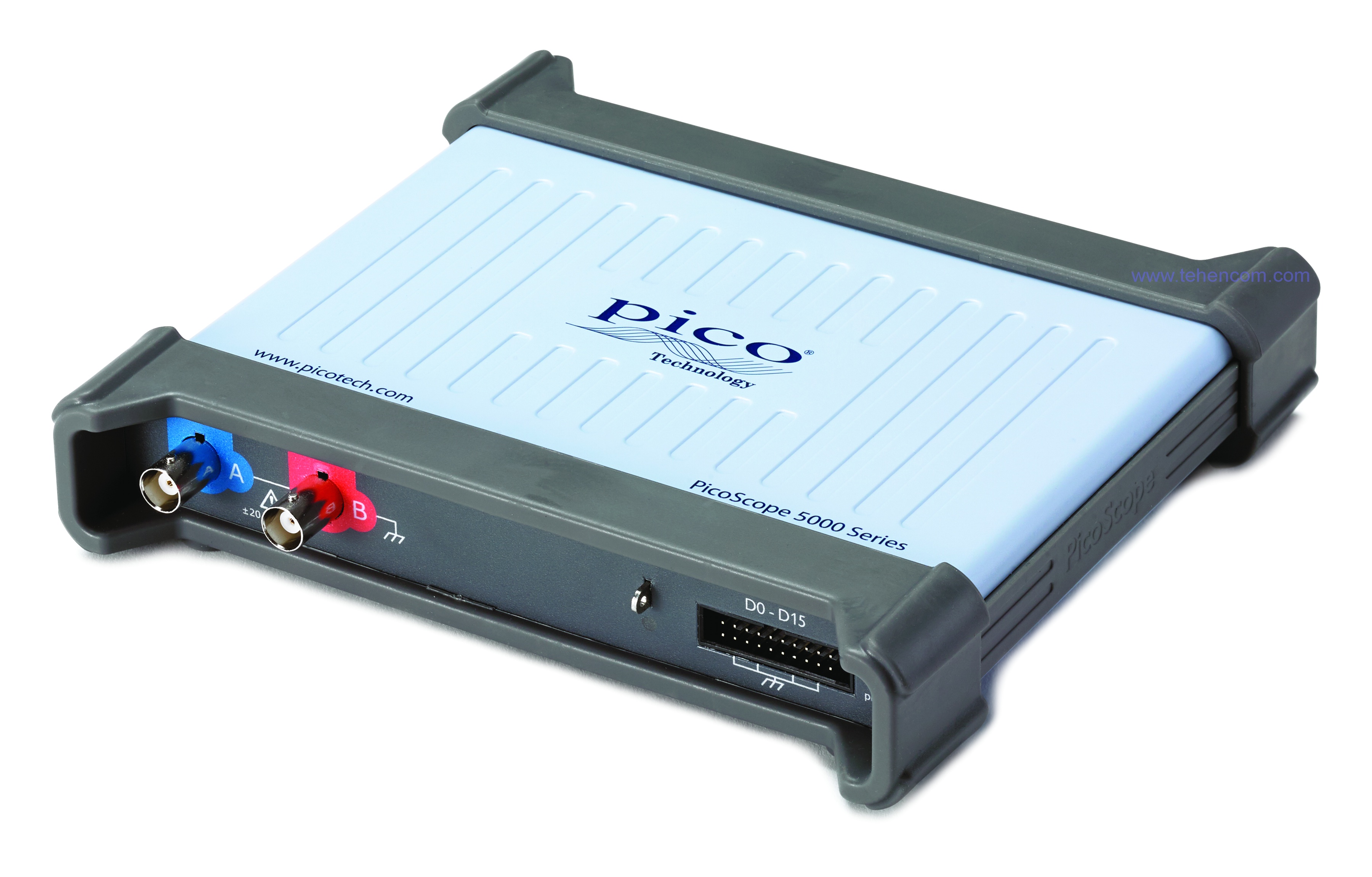 Pico Technology 5242D MSO
Pico Technology 5242D MSOOscilloscope, 60 MHz, 2 + 16 channels, 1 GS/s
From 78 954 UAH
On order
Product code: 3030035
Record length: 128 M points
Vertical resolution: 8 – 16 bits
Waveforms per second: 130 000
-
Novelty
 Pico Technology 3416E
Pico Technology 3416EOscilloscope, 200 MHz, 4 channels, 5 GS/s
From 112 614 UAH
On order
Product code: 3030104
Record length: 2 000 M points
Vertical resolution: 8 – 10 bits
Waveforms per second: 300 000
-
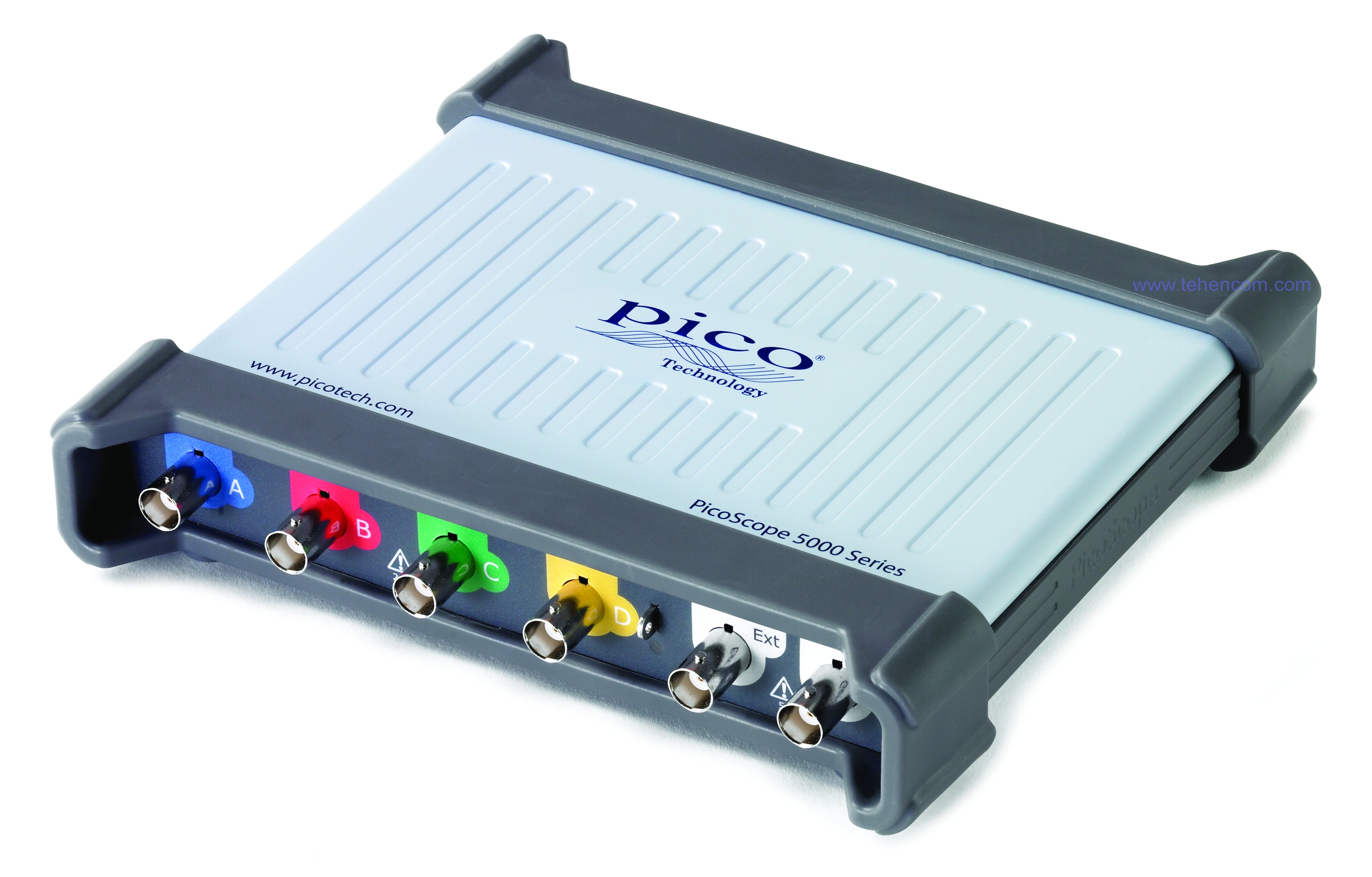 Pico Technology 5442D
Pico Technology 5442DOscilloscope, 60 MHz, 4 channels, 1 GS/s
From 90 342 UAH
On order
Product code: 3030036
Record length: 128 M points
Vertical resolution: 8 – 16 bits
Waveforms per second: 130 000
-
 Pico Technology 5442D MSO
Pico Technology 5442D MSOOscilloscope, 60 MHz, 4 + 16 channels, 1 GS/s
From 105 192 UAH
On order
Product code: 3030037
Record length: 128 M points
Vertical resolution: 8 – 16 bits
Waveforms per second: 130 000
-
Novelty
 Pico Technology 3417E
Pico Technology 3417EOscilloscope, 350 MHz, 4 channels, 5 GS/s
From 172 014 UAH
On order
Product code: 3030106
Record length: 2 000 M points
Vertical resolution: 8 – 10 bits
Waveforms per second: 300 000
-
 Pico Technology 5243D MSO
Pico Technology 5243D MSOOscilloscope, 100 MHz, 2 + 16 channels, 1 GS/s
From 102 714 UAH
On order
Product code: 3030039
Record length: 256 M points
Vertical resolution: 8 – 16 bits
Waveforms per second: 130 000
-
Novelty
 Pico Technology 3418E
Pico Technology 3418EOscilloscope, 500 MHz, 4 channels, 5 GS/s
From 214 092 UAH
On order
Product code: 3030108
Record length: 2 000 M points
Vertical resolution: 8 – 10 bits
Waveforms per second: 300 000
-
 Pico Technology 5443D
Pico Technology 5443DOscilloscope, 100 MHz, 4 channels, 1 GS/s
From 122 022 UAH
On order
Product code: 3030040
Record length: 256 M points
Vertical resolution: 8 – 16 bits
Waveforms per second: 130 000
-
 Pico Technology 5443D MSO
Pico Technology 5443D MSOOscilloscope, 100 MHz, 4 + 16 channels, 1 GS/s
From 135 882 UAH
On order
Product code: 3030041
Record length: 256 M points
Vertical resolution: 8 – 16 bits
Waveforms per second: 130 000
General information
This page presents the offered USB oscilloscopes. To simplify the choice, a brief description of the features of each series of such oscilloscopes is given, from the simplest with models from 10 MHz, to the most functional with models up to 25 GHz. This will help you figure out how some series differ from others, and which model of USB oscilloscope is better to buy. And if you are choosing your first oscilloscope and are not very familiar with their types and characteristics, we recommend reading this article: How to choose an oscilloscope.
Of the entry-level USB oscilloscopes offered, the simplest models are contained in the PicoScope 2000AB series from Pico Technology (United Kingdom). These are miniature oscilloscopes with minimal cost, while having solid functionality: a sampling rate of 1 GS/s, built-in memory of up to 128 million points and a continuous waveform acquisition speed of up to 80,000 waveforms/s (DPO mode). The MSO modification also contains a logic analyzer with 16 digital channels.
Of the mid-range USB oscilloscopes offered with a bandwidth of up to 200 MHz, the most functional series is the PicoScope 5000D. The measurement capabilities of these oscilloscopes are comparable to the best laboratory models, and the price is significantly lower. The main feature of this series is the ADC with hardware resolution up to 16 bits. There are twelve models in the PicoScope 5000D series. Six models (MSO modifications) contain a built-in logic analyzer with 16 digital channels. It is also worth paying attention to the very large amount of internal memory and the high speed of capturing and processing waveforms (up to 130,000 pcs/s).
The most powerful series of USB oscilloscopes with a bandwidth from 300 MHz to 3 GHz is the PicoScope 6000E. In total, the series consists of ten models, which, in addition to analog channels, also contain 16 digital channels, for which TA369 probes are used (one probe adds 8 digital channels). 15 automatic measurements are provided as standard, and decoding and analysis of more than twenty serial digital protocols is a basic function. Note the very large amount of built-in memory (up to 4 billion samples), the high speed of waveform acquisition and processing (up to 300,000 waveforms per second), and the fact that the cost of these oscilloscopes is significantly lower than the cost of most desktop models with similar bandwidth.
Documentation and useful materials
-
Tutorial on the basics of oscilloscope measurements
RU, 60 pages, 2 MB
-
Tutorial on the oscilloscope probes
RU, 60 pages, 4 MB
-
12 things to consider when choosing an oscilloscope
RU, 30 pages, 7 MB
-
Probes selection guide for Tektronix oscilloscopes
EN, 23 pages, 4 MB
Need help choosing equipment?
To simplify the process of choosing the optimal set of equipment, you can use our experience and recommendations. We have more than 20 years of practical supply experience and we can immediately answer many questions about models, options, terms, prices and discounts. This will save your time and money. To do this, just contact us or order a free consultation and we will be happy to answer your questions.
